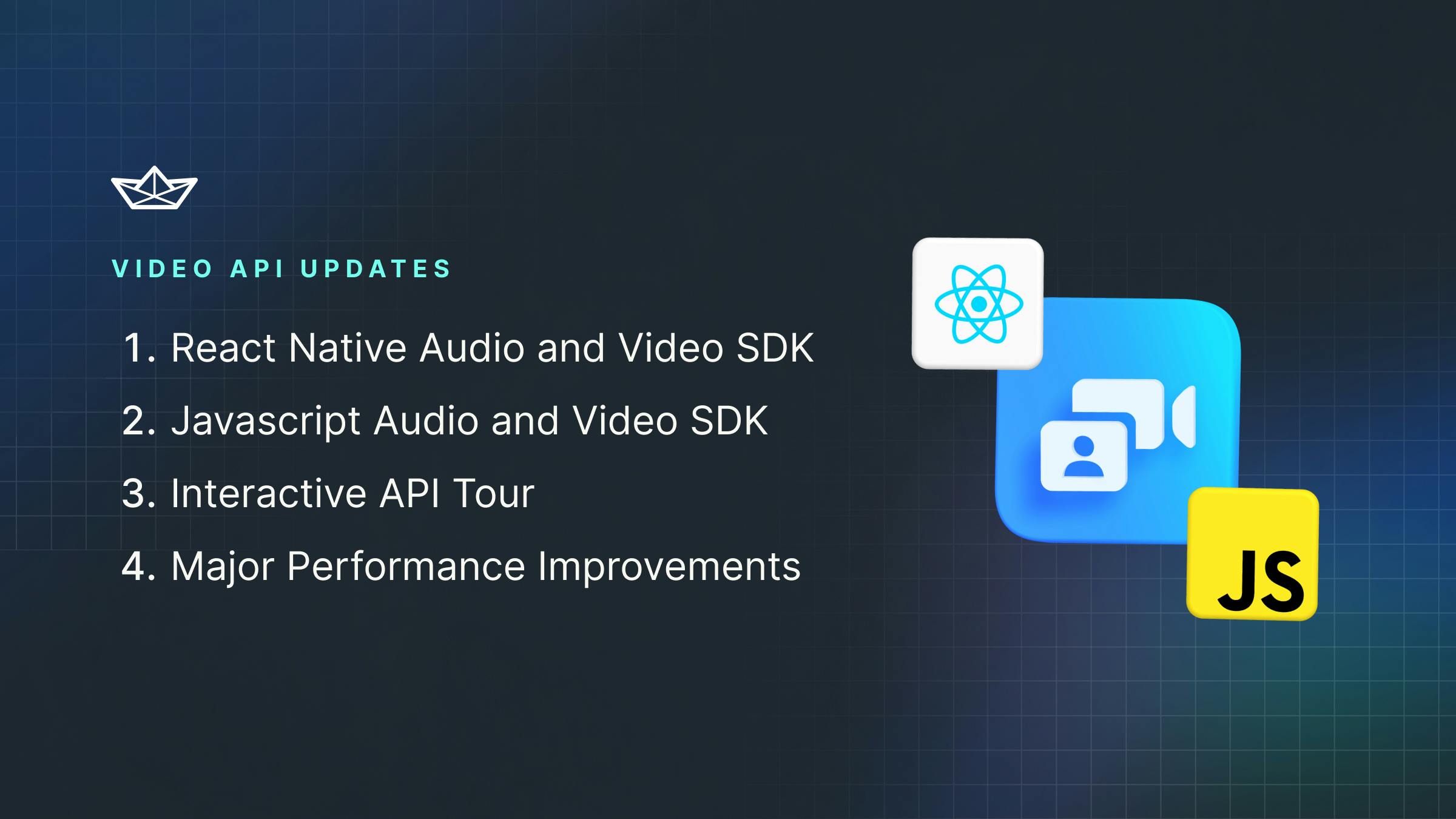Since the initial release of our Video & Audio API, we've been working to improve the API and add new features and new frontend SDKs. We’re excited to share an update with major enhancements, and more coming soon.
In addition to iOS, Android, React, and Flutter, we’ve now released SDK support for React Native and plainJS. Optimizations under the hood have increased the number of call participants supported, and we invite you to click through our new interactive API tour and learn how to connect your first video call.
With so many new improvements, there’s never been a better time to join the open beta and start building. Contact us to book your free onboarding call today.
New SDK: React Native 🎉

Starting today, developers can now build real-time calling, live streaming, and audio room applications using React Native and Expo! Our SDK includes step-by-step tutorials for all three use cases:
Building video applications can be difficult and include many pitfalls and challenges — especially when having to support multiple devices, operating systems and codecs.
Our React Native SDK makes this integration painless by shipping with support for keeping calls alive while the app is in the background, incoming calls screens and native permission handling all out of the box.
As an early adopter of our React Native SDK, you'll receive priority support while benefitting from a streamlined integration process. Our SDK provides you with ready-made components and features, making it a breeze to integrate video chat, audio rooms, or live streaming functionalities into your app.
Fill out the contact us form on our website to set up a meeting with our Product and Engineering team to get started.
New SDK: Vanilla Javascript 🎉

On day one, customers were able to build engaging video experiences on the web using our React Video SDK. Today, we’re also releasing our vanilla Javascript SDK to bring Stream’s Video and Audio API to projects outside of React.
Like our React and mobile SDKs, the Javascript SDK also exposes advance features such as recording, broadcasting, permission management and audio & video filters!
Check out the Javascript video calling tutorial to give it a try!
Video API Tour 📹

Not convinced that our Video API can be added in ten steps or less? 🤔
The new guided API Tour takes developers through the different steps of adding the Video API to a project and making your first call.
Give it a try to learn how Stream’s reusable video components makes it possible for developers to ship in days instead of months.
More Improvements Under the Hood 🛠️
Behind the scenes, our backend teams have been hard at work improving the products infrastructure and adding new features.
Earlier this month, our team benchmarked 400 participants in a single call on one server. As we continue to optimize the infrastructure, these numbers will increase rapidly in the coming months. Stream’s architecture is setup with SFU cascading which allows calls using our API to scale without limits — stay tuned for more updates!
Livestreaming also got a major update with improved support for RTMP and HLS allowing customers to easily start a live stream from external sources such as OBS studio and share the feed directly to their users in-app. Using HLS, Stream automatically handles buffering and splitting the track into multiple resolutions for end user consumption.
Finally, our SDK teams have also been hard at work improving performance across Android, iOS and Flutter. Users on iOS are now able to share their screens directly on their mobile device using our SDK.
For a full list of existing upcoming features, check out our public video roadmap!
Wrap up
As we continue our beta period, we look forward to receiving your feedback and collaborating with our community to build the best real-time Audio and Video API across all major platforms and SDKs. To stay up to date with everything Video and Stream, follow us on Twitter/X at @getstream_io and follow us on LinkedIn.

